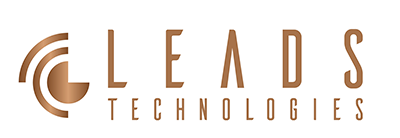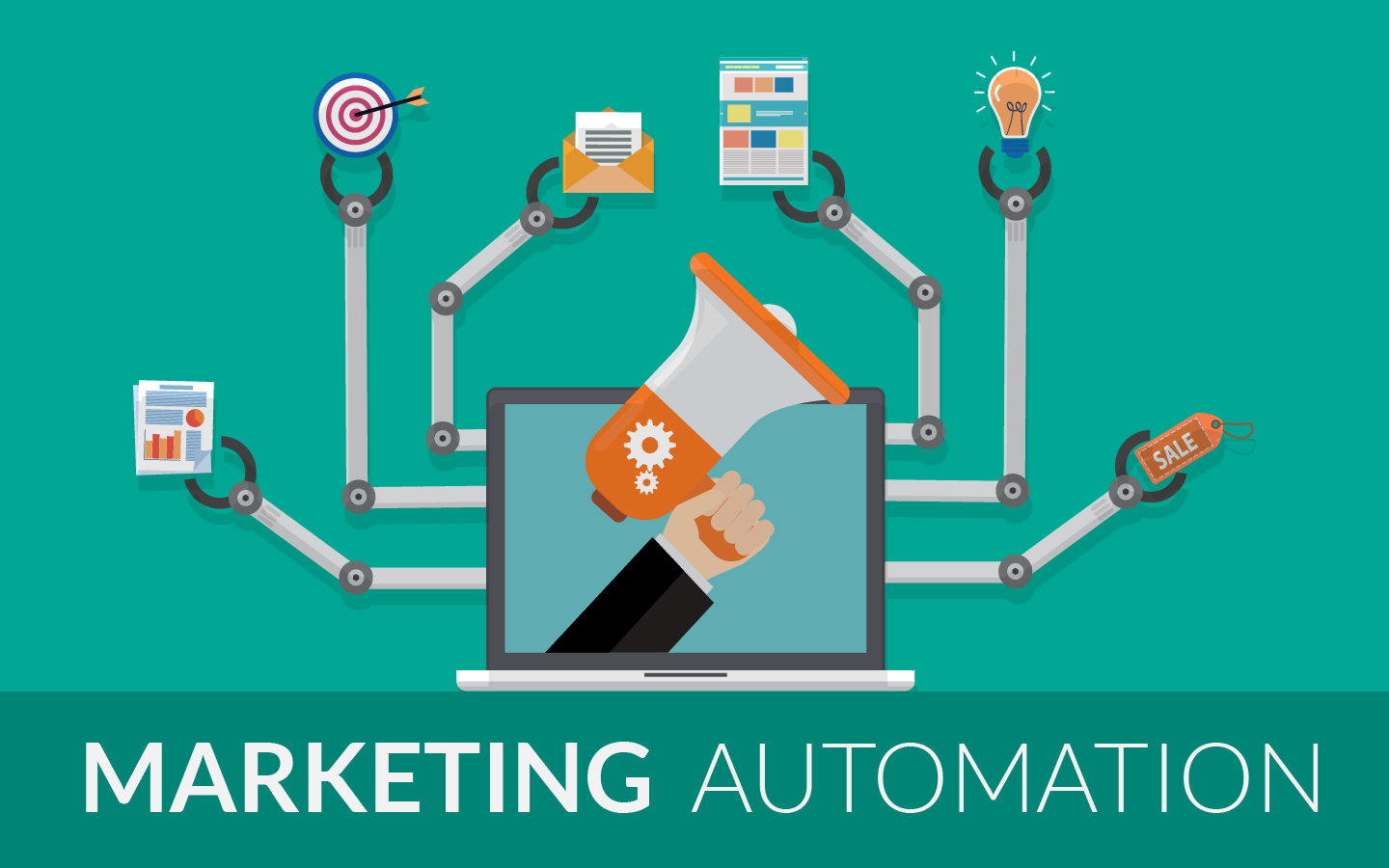- Introduction
- Definition and Background of Marketing Automation
- Core Principles and Technology of Marketing Automation
- Why Do Businesses Need Marketing Automation?
- Common Use Cases of Marketing Automation
- Main Benefits and Potential Challenges of Marketing Automation
- Conclusion and Action Recommendations
- References
- Introduction
- Definition and Background of Marketing Automation
- Core Principles and Technology of Marketing Automation
- Why Do Businesses Need Marketing Automation?
- Common Use Cases of Marketing Automation
- Main Benefits and Potential Challenges of Marketing Automation
- Conclusion and Action Recommendations
- References
Chapter 1: Introduction – Why Do Businesses Need to Understand Marketing Automation?
Marketing competition in the digital age is intense, and customer expectations are higher than ever. Every customer desires an immediate, personalized interaction that is tailored to their needs. However, many businesses still rely on manual marketing efforts, which result in wasted time and resources, leading to low efficiency, delayed responses, and even missed opportunities.
At this point, the concept of “Marketing Automation” was born.
What is Marketing Automation?
In simple terms, marketing automation refers to the use of software and technology to automate marketing tasks and processes, including customer data collection, automated segmentation, and personalized messaging, to improve business efficiency and customer experience.
For businesses, implementing marketing automation can solve the following common problems:

Reduce Marketing Costs
By minimizing repetitive manual tasks, marketing teams can focus on creativity and strategic planning.

Improve Accuracy
Automated tools analyze large datasets, helping businesses accurately understand customer behavior and preferences, delivering highly personalized marketing experiences.
Increase Conversion Rates
Automated triggers send relevant messages to potential customers at the optimal time, significantly increasing opportunities for conversion.
This article will provide you with a detailed explanation of the core concepts of marketing automation, practical scenarios for business applications, challenges faced during implementation, and how to plan your marketing automation strategy to help your business stand out in the digital competition.
Chapter 2: Definition and Development Background of Marketing Automation
“Marketing Automation” refers to the use of automated technology and digital tools to handle and optimize marketing activities and processes. It typically comes in the form of software platforms or cloud-based tools, helping businesses automate tasks such as data collection, customer segmentation, marketing message sending and tracking, and analyzing customer behavior.
1. What is Marketing Automation?
Marketing automation is not just about sending emails or push notifications; it encompasses the management and optimization of the entire customer journey. Through rule-setting and trigger mechanisms, it can instantly and automatically send highly relevant content to specific customers, achieving goals like lead nurturing and retargeting.
In general, marketing automation includes the following key functions:
- Customer Behavior Tracking and Data Analysis
- Automated Content Marketing and Message Sending
- Lead Nurturing and Customer Journey Management
- Personalized Content and Recommendation Systems
- Customer Segmentation and Dynamic List Management
2. The Development and Evolution of Marketing Automation
The concept of marketing automation emerged in the early 2000s. With the advancement of digital marketing technologies, especially the popularity of email marketing and CRM systems, businesses gradually realized that manually handling vast and complex customer data and marketing processes was no longer sufficient to meet the rapidly growing digital demands.
In recent years, with the maturity of artificial intelligence (AI) and machine learning (ML) technologies, the precision and personalization of marketing automation have significantly improved. Businesses are now able to use AI to analyze massive amounts of data in real-time, predict customer behavior, and even proactively recommend the right products or services before a customer expresses a need.
According to recent surveys, by 2025, over 70% of businesses worldwide will have adopted marketing automation technology, and this trend continues to rise. Companies are not only improving efficiency through marketing automation but also leveraging its precision marketing capabilities to strengthen their competitive advantage.
Chapter 3: Core Principles and Technology of Marketing Automation
Understanding the core principles and technologies of marketing automation helps businesses plan, implement, and optimize their marketing strategies more effectively. By mastering these technologies, you can manage customer relationships more efficiently and improve marketing effectiveness.
1. Automation Triggers
The most basic principle of marketing automation is to use “triggers” to initiate automated processes. Triggers are usually set based on customer behavior, timing, or specific situations, such as:

Behavior Triggers
When a customer views a specific product on the website, abandons their shopping cart, or clicks on a specific link, an automatic reminder or coupon is sent.
Time Triggers
For instance, sending a congratulatory email or product usage tips automatically on a customer's birthday, a holiday, or one week after a purchase.

Data Change Triggers
For example, when a potential customer clicks on an email a certain number of times, they are automatically marked as a "high-potential lead," triggering further nurturing processes.
Through this trigger mechanism, businesses can precisely control the best timing for customer interactions, proactively driving customer behavior and improving conversion rates.
2. Data Collection and Analytics Technology
The core of marketing automation systems lies in the collection and analysis of customer data. The system typically integrates customer interaction data from multiple channels such as websites, apps, social media, and emails, including:
- Basic customer information (name, age, gender, etc.)
- Customer interaction behaviors (click records, time spent, purchase history, etc.)
- Customer response data (e.g., open rates, click-through rates, conversion rates)
By analyzing this data in real-time, the system can quickly identify customer needs and preferences, automatically segmenting customers into different groups to provide more personalized and effective marketing content.
3. Personalization and Segmentation Strategies
Personalization and segmentation are among the most important applications of marketing automation technology. Based on the customer’s data profile and behavioral patterns, the system can dynamically adjust the marketing message content each customer receives, including:
Dynamic Recommendations
Providing personalized product recommendations in real-time based on a customer's past purchase history and browsing behavior.
Personalized Messaging
Automatically adjusting the content and subject line of emails or push notifications based on customer preferences.
Dynamic Content Presentation
Websites or emails adjust content and promotional offers in real-time based on a customer's past interactions and interests.
Through the above principles and technologies, businesses can achieve true “One-to-One Marketing,” effectively increasing customer engagement and loyalty.
Chapter 4: Why Do Businesses Need Marketing Automation?
Marketing automation is not just a technological upgrade, but a crucial strategy for businesses to maintain competitiveness in their digital transformation. As market competition intensifies and consumer demands become more diverse, companies must adopt automation technology to accelerate responses, perform precise marketing, and improve efficiency. This chapter explains three main reasons why businesses should implement marketing automation.
1. Improve Efficiency and Reduce Labor Costs
Traditional marketing methods often require significant human input, such as manually sending messages, organizing data, and tracking customer responses, leading to resource waste and low efficiency. Marketing automation tools, through rule-setting and trigger mechanisms, can save a substantial amount of time and labor:
- Automating Routine Tasks: Such as sending newsletters, event invitations, and collecting customer feedback automatically.
- Real-Time Responses: Automatically triggering relevant messages based on customer behavior, reducing human intervention.
- Standardizing and Simplifying Processes: Reducing human error and ensuring message consistency and timeliness.
By easing the burden on staff, marketing teams can focus more on strategic planning, creative ideation, and overall marketing performance improvement.
2. The Demand for Precise and Personalized Marketing
Modern consumers increasingly value personalized experiences. According to research by Salesforce, up to 76% of consumers expect brands to understand and provide more personalized interactions. Marketing automation helps businesses achieve precise marketing in the following ways:

Customer Data Integration and Analysis
Real-time collection and analysis of large amounts of customer data to understand their needs and preferences.

Personalized Recommendation Engine
Automatically generating personalized content and offers based on a customer's past behavior.
Dynamic Segmentation and List Management
Automatically classifying customers based on their behavioral traits to provide more relevant personalized content.
Through precise and personalized interactions, businesses can significantly improve customer satisfaction and brand loyalty.
3. Enhance Customer Satisfaction and Loyalty
It’s not just about attracting new customers; it’s equally important to effectively retain existing customers and increase their Customer Lifetime Value (CLV). Marketing automation can help businesses:
- Build Customer Journey Mapping: Gaining a clearer understanding of customer needs at different stages and providing timely, relevant messages.
- Automate Lead Nurturing: Gradually guiding potential customers from the initial contact stage to the purchase stage, enhancing conversion rates.
- Increase Customer Engagement: Automatically responding to customer needs in real-time, providing a positive and efficient brand interaction experience.
According to Adobe research, businesses that effectively use marketing automation to enhance customer experience have seen an average increase of over 20% in customer loyalty and repurchase rates.
Chapter 5: Common Use Cases of Marketing Automation
With the growing variety of marketing tools and communication channels, marketing automation’s application goes beyond just email marketing (EDM). Businesses can use omni-channel integration to engage in personalized interactions with customers across multiple platforms, greatly enhancing marketing effectiveness. Below are the top five most common use cases:
1. Multi-Channel Message Delivery (EDM, SMS, App Push, Social Messaging)
Different customers prefer different ways of receiving messages. Modern marketing automation systems can integrate multiple communication channels and automatically select the best channel for delivery based on customer data and preferences:
- EDM (Email): Such as welcome emails, event invitations, cart abandonment reminders, newsletters, etc.
- SMS: Such as limited-time offers, account verification codes, payment reminders.
- App Push Notifications: Such as promotion reminders, new feature launches, app activity alerts.
- LINE / WhatsApp / Messenger: Such as customer service replies, personalized recommendations, real-time notifications.
2. Customer Journey Automation
By designing a complete automated interaction path based on customer behavior, businesses can effectively guide potential customers toward conversion:
- First Interaction → Push Educational Content
- Product Browsing → Automatically Recommend Similar Products
- Abandoned Cart → Automatically Send Reminder + Discount Coupon
- Post-Purchase → Send Usage Instructions + Review Invitation
- No Interaction for Over 30 Days → Send Retargeting Message
3. Lead Nurturing & Scoring
Marketing automation can proactively identify potential customers and automate their progression through the decision-making journey:
- Automatically Push Educational Email Sequences
- Behavioral Accumulation Scoring (Lead Scoring)
- Once a Lead Reaches a Heat Threshold, Automatically Assign Sales Follow-Up
4. Customer Retention & Retargeting
Through marketing automation, businesses can continuously interact with customers to promote repeat purchases and enhance loyalty:
- Automatically Push Replenishment Reminders Based on Purchase Cycle
- Send Exclusive Offers Automatically When Customers Haven't Returned in a While
- Send Limited-Time Discount Notifications When Products Are Watched But Not Purchased
- Automatically Send Birthday & Anniversary Wishes with Discounts
5. Marketing Campaigns & Promotion Automation
All stages of marketing campaigns, from pre-event to post-event, can be handled through marketing automation systems:
- Automatically Send Event Invitations + Track Open Rates
- Automatically Send Registration Reminders Based on Click Behavior
- Automatically Send Feedback Surveys After Events
- Segment Marketing Based on Attendance Status
Chapter 6: Key Benefits and Potential Challenges of Marketing Automation
Marketing automation brings significant breakthroughs in efficiency, precision, and scalability for businesses, but its implementation often faces challenges at both the strategic and technical levels. This chapter will comprehensively analyze its advantages and risks, helping you plan for a rational implementation.
1. Key Benefits
1. Improve Work Efficiency and Marketing Speed
By automating repetitive tasks (such as email sending, event reminders, and customer segmentation), marketing teams can focus on strategy and creativity, while also shortening market response times.
2. Enhance Customer Experience and Conversion Rates
Personalized, real-time interaction processes can make customers feel that the brand genuinely cares about them. For example, when a customer clicks on a product in the app, receiving a product recommendation push within 10 minutes can effectively guide them towards completing a purchase.
3. Precise Segmentation and One-to-One Marketing
Automatically categorize customers based on their behavior, preferences, and attributes, then push relevant messages to avoid the waste of "broadcast marketing" and improve marketing return on ad spend (ROAS).
4. Data-Driven Marketing Decisions
All interactions can be tracked and quantified, allowing you to optimize each marketing touchpoint based on data rather than relying on gut feelings.
5. Cross-Channel Support and Strong Scalability
From Email, SMS, App Push, social media messages, to website personalized content, all can be managed from the same platform, reducing the need for multiple systems and easily expanding to new channels and regional markets.
2. Potential Challenges
1. High Initial Cost and Learning Curve
Although long-term benefits are considerable, the initial phase requires investment in tool setup, staff training, and process design. Without sufficient internal resources or clear strategies, there is a risk of abandonment halfway through.
2. High Complexity in System Integration
If the company’s existing systems (such as CRM, ERP, website, or app) are not well-integrated with the marketing automation platform, it may lead to data gaps, tracking failures, or inconsistent content issues.
3. Compliance Risks with Regulations and Privacy
Regulations like GDPR, CCPA, and Hong Kong's Personal Data (Privacy) Ordinance have strict guidelines on data usage. If the system design does not comply with these regulations, the company could face penalties and damage to its brand trust.
4. Inappropriate Content and Strategy Leading to Discontent
If the process design is too frequent or the content lacks value, customers may feel annoyed, unsubscribe, or even block brand messages.
How to Reduce Implementation Risks?
- Start small with a single channel (e.g., EDM) and gradually expand functionalities.
- Collaborate with experienced implementation partners to design customer journeys and integration plans.
- Adopt mainstream platforms that comply with international regulations (e.g., Adobe Journey Optimizer).
Chapter 7: Conclusion and Actionable Recommendations
Marketing automation is not just a technical tool, but a mindset and strategy that leads businesses towards digital maturity. Whether it’s improving efficiency, enhancing customer experience, or optimizing marketing return on investment, marketing automation is an indispensable asset for modern enterprises.
In this article, we’ve provided a systematic overview of marketing automation, from definitions, core principles, application scenarios, to practical benefits and challenges. For businesses that are just starting out or haven’t yet implemented marketing automation, here are our suggested action steps:
Three-Step Strategy for Implementing Marketing Automation in Enterprises:
- Clarify Business Goals and Customer Journeys
Understand when and where your customers engage, and what content they need. Start planning the automation process around the most impactful touchpoints. - Start with a Single Scenario or Channel
You don’t have to implement all features at once. Begin with specific scenarios such as email, app push notifications, or cart reminders, and quickly see the benefits. - Select a Stable and Scalable Marketing Automation Platform
We recommend choosing a solution that supports cross-channel integration and natively incorporates AI and CDP, such as Adobe Journey Optimizer (AJO), to ensure future scalability.
Further Reading Recommendations:
Top 10 Marketing Automation Tools in 2025 (Including Ratings and Usage Suggestions)
How to Choose a Marketing Automation Platform? 5 Key Selection Criteria and Processes Every Enterprise Must Know
Deep Dive into Adobe Journey Optimizer Features and Applications
Marketo Product Introduction
HCL Unica Product Introduction
Want to Know How Your Business Can Implement Marketing Automation?
Our expert team can help tailor the most suitable automation marketing processes for your business, whether you’re in B2B, eCommerce, education, or finance.
Contact Us for Free Consulting Advice
Chapter 8: References
To provide accurate and in-depth content, this article references the following professional materials and authoritative sources:
- Adobe Journey Optimizer Official Introduction
https://experienceleague.adobe.com/docs/journey-optimizer.html - Salesforce Marketing Cloud – Marketing Automation Overview
https://www.salesforce.com/products/marketing-cloud/overview/ - Mailchimp – What Is Marketing Automation?
https://mailchimp.com/marketing-automation/ - Statista: Global Marketing Automation Market Growth Trend (2020–2025)
https://www.statista.com/statistics/1149883/marketing-automation-software-market-size-worldwide/ - Salesforce – State of Marketing 2023 Report
https://www.salesforce.com/resources/research-reports/state-of-marketing/ - HubSpot – Marketing Automation Statistics
https://blog.hubspot.com/marketing/marketing-automation-stats



